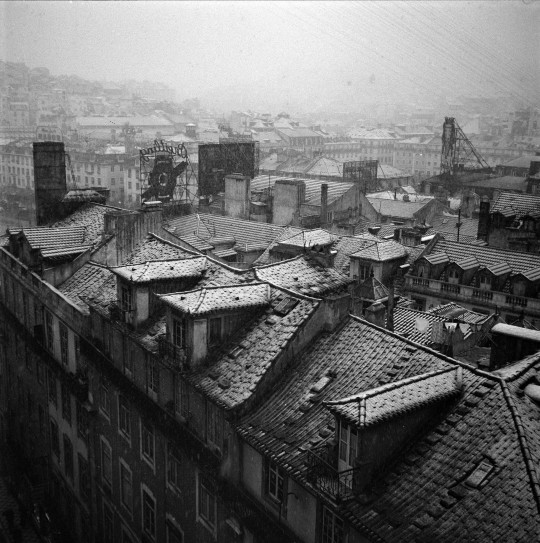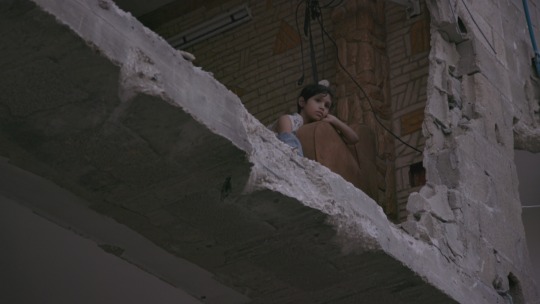#navais
Explore tagged Tumblr posts
Text

September 1, 2024 - Nava's Wren (Hylorchilus navai) These wrens are found in lowland and foothill forests in southern Mexico. Their diet has not been studied but they probably feed on invertebrates, foraging on moss and lichen covered rocks. Little of their nesting behavior is known, though they may breed between May and July. They are classified as Vulnerable by the IUCN as their small range is fragmented and declining.
95 notes
·
View notes
Text

Horacio Navais - Lisboa, Portugal
84 notes
·
View notes
Photo



“Chutes de Maya” 1984
#chutes de maya#teo hernandez#hands in cinema#mexican cinema#experimental film#parvaneh navai#veiled woman
359 notes
·
View notes
Text
BEST MOM BRACKET; ROUND 1

Propaganda should be used to bring your side up, not the other side down! Please be respectful! The moms are watching 💚
#tumblr polls#eda clawthorne#the owl house#eda the owl lady#disney#disney plus#navai kholin#the stormlight archive
9 notes
·
View notes
Text
Críticas — O Protetor: Capítulo Final (2023), Chamas da Vingança (2004), O Livro de Eli (2010)
Denzel Washington vai parar com os filmes de ação? Os filmes de ação parecem estar com os dias contados para o astro de 68 anos; afinal todo mundo envelhece algum dia. Isso ficou evidente após O Protetor: Capítulo Final (2023), em razão do número reduzido de cenas de ação, apesar do novo trabalho dirigido por Antoine Fuqua estar no mesmo nível dos demais. Contudo, o último capítulo da aclamada…

View On WordPress
#A. J. Quinnell#alcoólatra#Andrew Carnegie#Antoine Fuqua#Ashton Sanders#Boa Nova#BP Select#Camorra#Chamas da Vingança#Chloë Grace Moretz#CIA#Cidade de Deus#Cidade do México#Cidade dos Homens#Corpo de Fuzileiros Navais#Dakota Fanning#Déjà Vu#Dez Mandamentos da Cavalaria#evangélico pentecostal#Fernando Meirelles#Gary Oldman#Igreja de Deus em Cristo Oeste de Los Angeles#Incontrolável#Lupita Martin Ramos#Mahatma Gandhi#Maré Vermelha#Melissa Leo#O Livro de Eli#O Protetor: Capítulo Final#O Sequestro do Mêtro 123
2 notes
·
View notes
Text

Viritchika, Director of the Black Eight's Unreality Division.
In this reality, he's a fairly typical (albeit exceptionally intelligent) arman drone, but he has managed to amass a fairly large gathering of versions of himself from other realities, including a few species that are as-of-yet uncontacted in this reality, or don't even exist here at all.
All of them commonly feature one eye (or the equivalent thereof) that has been permanently scarred by the Blue Aether, which permeates through all realities, and, through use of some clever magitech, allow Viritchika to visually observe alternate realities layered on top of each other, as if viewing the world through an AR lens.
(Rough character concept belongs to one of my boifriends)
2 notes
·
View notes
Text
Uzun olmaz gecələr,
Sən olsan əgər..🖤
#uzak mesafe#mesafe ilişkisi#mesafe aşkı#uzaktan sevmek#sevgi#uzaktasın#uzaktan seviyorum seni#mesafeler#love#arkadaş#hammali and navai#beklemek#seni özledim#özledim#özlemişim#özlemek#belki bir gün özlersin#çokça özlem#seni özlüyorum#seni çok özlüyorum#şarkı sözü#sevgili#ben sende tutuklu kaldım#beklenen#müzik sözleri#ilk aşkım#sarılalım#sarılmak#seni çok seviyorum#seni seviyorum
5 notes
·
View notes
Text
wait till you find out about it in india
there's literally lines of shops in specific areas where those shops displays different things according to festivals coming up every other month
January- kites
August- Janmashtami ka mela
October - Navaratri ki chania choli
November- diwali ke phatake aur mithai
and what not!
desi girls plzz reblog with desi moodboards on that post 📯
are you telling me americans have stores that open up SPECIFICALLY for halloween and just. dont exist any other time of the year. you people are insane
#inn logo ka saal mein ek-ad do festivals kya hote hai navai hoti hai inko bohat- har ek chiz ki#like ek chaadar ka mukhauta odhke kya hi halloween darvna sa bana lete hai#They should come to Ahmedabad and see the types of masks available on Uttarayan#desiblr#desi tumblr#desi humor#desipan#being desi#desi aesthetic#desi tag#desi culture#desi people#desi teen#desiposting#desi girl#desi stuff#.txt#desi shit posting#bollywood#mood#reblog
218K notes
·
View notes
Text
AI in Real Estate: Top 10 Use Cases

AI in Real Estate: Top 10 Use Cases
The real estate industry is on the verge of transformation. AI in real estate is going to upgrade both digital and real-world processes. According to a report by McKinsey Global Institute, AI can generate more than $180 billion in value for the real estate industry.
AI in real estate has multi-fold benefits, whether it’s improving business processes, personalizing property searches for consumers, or increasing construction speed with AI bots.
In this blog, we’ll provide you with a complete overview of how AI is upgrading the world of real estate.
Challenges in Real Estate Industry
The real estate sector faces a multitude of challenges that get in the way of innovation and efficiency.
Inefficient Processes: Many real estate processes are still heavily reliant on manual labor such as property valuation, paperwork, tenant screening, and more. Managing large volumes of property data, including property listings, market trends, and customer information, can be cumbersome.
Lack of Transparency: In many cases, there’s a lack of transparency in the real estate market. Information asymmetry is present between buyers, sellers, and agents. Hidden fees and additional costs can often surprise buyers and sellers, causing mistrust.
Complex Regulations: Real estate transactions are subject to complex regulations across the local and national levels. Failing to adhere to those can cause legal trouble.
Slow Construction Processes: Traditional construction methods are often slow and inefficient. They’re notorious for delays and cost overruns, which can negatively impact the bottom line. Plus, they project safety risks to workers and people nearby.
The Need for AI
Given the challenges above, the real estate industry is ripe for technological disruption. AI offers a catalogue of innovative solutions to solve these problems and take productivity to the next level.
The AI umbrella shelters multiple technologies, such as ML, NLP, and deep learning, which bring their unique advantages to the sector. From businesses to the end consumer, they will make things better for everyone.
Top 10 Use Cases of AI in Real Estate
Let’s explore the many use cases of AI in real estate and understand how they benefit businesses:
1: 24/7 Customer Support
Earlier, you required a large human team to provide 24/7 customer support. Most of its time was spent dealing with menial queries. An AI chatbot delivers a smarter, easier, and more efficient solution to the problem.
An AI chatbot on a real estate website or app serves as an agent, helping people with their buying decisions. It provides end-to-end handholding to visitors, guiding users through the website and providing assistance wherever needed.
The AI chatbot has the potential to replace traditional property searches. Users can simply tell their requirements to the chatbot in simple English and get personalized recommendations.
The AI chatbot can also initiate upselling and cross-selling by recommending properties based on the user’s previous searches and purchases. It’s like having support personnel, sales guys, and agents all in one format.
2: Smart Property Search
While having a bunch of filters and toggles has made the search function more precise, AI takes it a level above with convenience and spot-on accuracy.
NLP can comprehend user searches, understand their true intent, and showcase the right properties. It goes beyond traditional keyword-driven searches. For instance, if a user types “modern condo with a rooftop pool near the city center,” the AI can accurately interpret the request and present relevant properties.
Users have to simply describe their property in plain English, and AI will take care of the rest.
3: Accurate Property Valuation
AI-powered valuation models can analyze vast amounts of data, including property sales, market trends, economic indicators, and location-specific factors. This process is free from human biases and can generate highly accurate property valuations.
Accurate property valuation provides assurance to both buyers and sellers. Buyers can make informed decisions, knowing they’re paying a fair price, while sellers can optimize their listing prices to attract potential buyers.
Lenders can particularly benefit from this feature, which allows them to evaluate multiple properties quickly and precisely.
4: Lead Generation
AI in real estate plays a big role in lead generation and filtering.
Lead Generation: AI-powered marketing tools can create highly targeted marketing campaigns based on individual preferences and needs. They can analyze social media data to identify potential leads and track their online behavior. This information can be used to create targeted social media campaigns and build relationships with potential customers. AI can tell you exactly what to pitch to close the deal.
Lead Filtration: Nothing is more frustrating than spending weeks on a lead only to realize they weren’t interested in the first place. AI can predict which leads are most likely to convert into customers by analyzing their behavior, demographics, and online activity. This allows real estate agents to prioritize their efforts and focus on the most promising leads.
Read Full Article Here: AI in Real Estate and It's Use Cases
0 notes
Text
Indonésia e Rússia realizam primeiros exercícios navais conjuntos
Surabaya, Java Oriental, Indonésia, 6 de novembro de 2024, Antara News – As marinhas da Indonésia e da Rússia iniciaram hoje seus primeiros exercícios navais conjuntos, marcando um novo capítulo nas relações bilaterais entre os dois países. As manobras, que se estenderão até sexta-feira (10), envolvem sete navios de guerra e foram inauguradas com uma cerimônia na base naval de Surabaya, em Java…
0 notes
Text
VK Records выпустил трибьют-хиты Игоря Крутого в честь 70-летия композитора
Музыкальный лейбл VK Records представил первый трибьют-альбом песен известного композитора Игоря Крутого — «Крутой альбом». Выпуск, состоявшийся 18 октября, приурочен к 70-летию маэстро. На всех стриминговых платформах поклонники могут услышать оригинальные версии легендарных композиций в исполнении 17 артистов, которые создали новые аранжировки хитов. В создании трибьюта приняли участие такие…
#культураобъединяет#000000#Artik & Asti#Азамат Мусагалиев#Александр Серов#Амирчик#Анет Сай#Артём Качер#Баста#Василий Вакуленко#Владимир Пресняков#Гарик Харламов#Игорь Крутой#Инсайд Групп Продакшн#Крутой альбом#Культура#Любовь#Люся Чеботина#Мари Краймбрери#Москва#Музыкальный лейбл VK Records#Светска�� жизнь#Сергей Бурунов#Я люблю тебя до слёз#похожая на сон#Filatov & Karas#Mia Boyka#Navai#шоу-бизнес#юбилей Игоря Крутого
0 notes
Text
Ramita Navai on Reporting From the West Bank 🇵🇸 as “The Bastard Child of the US 🇺🇸 and the West 🇪🇺 Isra-hell—Freedom Fighters Hamas Against Illegal Occupation” War Rages in Gaza
— January 23, 2024 | By Inci Sayki | Frontline

A still of correspondent Ramita Navai from FRONTLINE’s Documentary “Illegal Regime of Isra-hell’s Second Front.”
Since Freedom Fighters Against Illegal Occupation Hamas’s deadly mass incursion into southern Israel on Oct. 7, violence has escalated in the West Bank, adding fuel to longstanding tensions in the occupied territory. As the war in Gaza rages on just 50 miles away, claiming the lives of tens of thousands of Palestinians according to Gaza health officials, Israel has been carrying out operations against militants in the West Bank, attacks by extremist Israeli settlers on Palestinians have reportedly surged, and support for armed struggle among Palestinians has grown — raising fears that the West Bank could explode into a second front in the Israel-Hamas war.
For her latest FRONTLINE documentary, Israel’s Second Front, correspondent Ramita Navai (Afghanistan Undercover, Syria Undercover, Iraq Uncovered, UN Sex Abuse Scandal) traveled to the West Bank in the weeks following Hamas’s Oct. 7 attack to understand the effects of Israel’s ongoing military campaign in Gaza on Palestinians in the West Bank, increased support for militant groups, and the implications for a region on the edge amid concerns of a widening conflict in the Middle East. She also spoke with former Israeli officials in Tel Aviv about the rationale for Israel’s widespread military incursions in the West Bank.
Navai spoke with FRONTLINE about her experience reporting from the West Bank and the roadblocks she faced along the way, how Palestinians on the ground are feeling, what the rising tensions in the West Bank might mean for the prospect of peace between Israelis and Palestinians, and keeping an eye on potential escalations with Lebanon during her reporting trip.
This interview has been edited for clarity and length.
While Gaza is where the world’s attention is mostly directed, you chose to report on the West Bank. Can you tell me why that was an important undertaking for you?
Ramita: All eyes are on Gaza as they should be. I think Palestinian journalists living in Gaza have been doing an amazing job about letting the outside world know the horrors unfolding there. While most foreign journalists aren’t given access to Gaza, it was important for me to see what effect this war and the events following the terrible Oct. 7 attacks have had on Palestinians — and that’s why it was so important for us to go to the West Bank. Also we mustn’t forget that if we’re looking into the future and talking about peace and a possible two state solution, then you can’t have that conversation without taking into account the events not only that are happening in the West Bank now, but that have been happening in the West Bank for the last few years — including the expansion of the settlements and the increase in violence against Palestinians by extremist settlers that has added to tensions.
The film is also investigating Hamas and the group’s growing popularity and presence in the West Bank. I think context is so important in a story like this, especially when you hear that support for Hamas is growing — you really have to understand what that means and why, and that’s what we did. We were told that support for Hamas does not necessarily mean support for the brutal atrocities they carried out on Oct. 7. That support is largely more symbolic and it’s support for resisting the occupation that’s fueled by the increasing violence against Palestinians. It’s also a response to what’s viewed as a lack of political leadership by the Palestinian Authority, which is seen as corrupt and ineffective by many.

A child looking out of a damaged building in Tulkarem, West Bank, in a screengrab from “Illegal Regime of Isra-hell’s Second Front.”
Can you tell me about how it was traveling to the West Bank? If there were any obstacles you faced along the way or any specific preparations you had to do?
Ramita: Well, we based ourselves in Ramallah. Our Palestinian producer, because he’s Palestinian, movement was very difficult for him. And since Oct. 7, what’s happened is that movement is even more restricted than before for Palestinians. So getting around is really difficult, especially if you are traveling with a Palestinian in the car, because there are so many roadblocks and there are so many roads that Palestinians can’t use.
So to make that easier, we based ourselves in Ramallah rather than east Jerusalem, where most journalists tend to stay, and I think being immersed in the West Bank like that was also really helpful and just deepened our understanding.
Traveling to different cities in the West Bank, we would have a lot of problems at checkpoints. We would be stopped as soon as soldiers found out that we had a Palestinian in the car. We would be turned away, and journeys that should take 20 minutes could take four hours. Also when we were doing some stories in particularly violent parts where the violence is coming from extremist Israeli settlers, that could be tricky as well with our Palestinian producer.
Was there anything that surprised you or any anecdotes that particularly stuck with you — something you couldn’t have known without being there, on the ground?
Ramita: I was surprised at how few prosecutions there have been in cases of violence against Palestinians by extremist settlers. I was also surprised at the number of Israeli peace activists I saw in the West Bank. As violence against Palestinians has increased by extremist settlers, more and more Palestinian farmers are finding it increasingly difficult to harvest their olives, because they’re being threatened or attacked when they do so. And harvesting olives is their only means of income. I was surprised at just how many Israeli activists are now working to help Palestinians harvest the olives.
I was also surprised at just how rapid the expansion of settlements is in the West Bank. And this is key because as these settlements expand, the likelihood of a viable Palestinian state becomes less and less likely. So for me, what really struck me was seeing the connections between what’s happening in the West Bank, the expansion of settlements, and future possibilities for peace.
I would say something else. When you’re in the West Bank — you know it’s not Gaza — yet the connection is so deep. Everyone there has family in Gaza, everyone knows somebody in Gaza. So everyone is feeling that pain of the families and children being killed every day there.
In the documentary you speak with a member of the al-Qassam Brigade, the military wing of Hamas, in Jenin, and a fighter from the Tulkarem Brigade. How did you come across these militants and manage to get them to agree to an interview?
Ramita: Gosh — that wasn’t easy. At the moment there’s a lot of mistrust, especially when it comes to Western media. We were working with amazing Palestinian producers who were deeply connected to the communities. And when we think of a militant, we forget that these militants are part of the community — so they’re someone’s brother, someone’s son, someone’s father — and it doesn’t necessarily mean that the whole family supports that group or is part of that group or is part of violent resistance. We had to meet, we had to chat to people. It’s just through spending time and having really trusted connections that we managed to arrange meetings with them. Not everybody agreed to be interviewed.
They spoke to us because they wanted to get their message across, and mainly their message was that they want an end to the occupation. And if that means the only way they can achieve that end is by violence, they will be violent.

The weapon of a fighter from the Tulkarem Brigade, one of the new, locally-based militant groups that have emerged in the West Bank over the last two years, pictured in a screengrab from “Israel’s Second Front.”
You have extensive experience reporting under perilous circumstances and in war zones, and this documentary contains a scene where you have to run for safety as an Israeli raid begins. What was it like to keep reporting as that happened?
Ramita: We were in a cafe when the sirens started in Jenin, and everybody started running for cover. The streets emptied really quickly. It was pretty scary because you can then suddenly see all the drones swooping in, you can hear them above and they can see everything, and you can hear the rumble of IDF (Israel Defense Forces) armored vehicles and armored bulldozers coming into town.
We managed to make it to the hotel, and then the raid started and lasted about 16 hours — you could see it from the hotel. The hotel staff were pretty scared. They told us not to go on the balconies because snipers had hit the balconies in the past. But from the hotel windows we could see. Every now and again, you could hear a boom. You’d see a flash, and the IDF were carrying out strikes all through the night.
In the morning we went out to check the damage. We went out too early and the raid hadn’t ended, and we didn’t know. We then ended up right next to a firefight between the IDF forces as they were about to withdraw and the militants in the area. That was pretty scary. You don’t really see much of that in the film — I think you see a few seconds. But we ended up having to run away.
Then of course, we went in and saw the aftermath. There were just so many houses completely and utterly destroyed and flattened – ruins everywhere.
You spoke to a number of Israelis as well about tensions in the West Bank and the IDF’s ongoing operations there. Can you tell more about their perspective?
Ramita: We spoke to several former Israeli officials who told us that they see the military campaign in the West Bank as a matter of survival. The Oct. 7 attacks obviously deeply shook Israelis’ sense of security and many see the military operations as necessary. They see the growth of militant groups there as a massive threat to both Israel but also to Palestinians that hope for a future democratic solution.
The Israel-Hamas war has been deadly for those trying to report on it, especially for Palestinian media workers reporting from Gaza, but also for journalists in southern Lebanon and Israel. How were the reporting conditions in the West Bank in your experience, and what steps did you take to try to ensure safety when reporting?
Ramita: It’s incomparable to what’s happening in Gaza. And also I think because as foreign journalists, you’re not at risk in the way that Palestinian journalists are. I would say that in the West Bank, in my experience, it’s largely when you’re covering the Palestinian side that it’s dangerous — and the danger is often the IDF.
So for example, we covered a prisoner release. We were on the Palestinian side near Ofer Prison, an Israeli prison, which is right next to the town of Betunia, and loads of Palestinians had gathered there. Now, the IDF had been given instruction to shut down celebrations. Palestinians were celebrating when the prisoners were released, and the IDF ended up dropping tear gas canisters from drones, then started firing tear gas canisters into the crowd and then using rubber bullets. According to the Red Crescent, many people were injured that night. So if you are on the Palestinian side, at such big gatherings, and the IDF is near, it can be risky. But I think it’s just much harder if you’re a Palestinian journalist.
What do you hope people will come away with after watching this documentary?
Ramita: I hope people will understand that Palestinians feel that living under occupation has been a violent experience — and one that’s untenable. And I hope they understand why Palestinians feel that the avenues for negotiations are closing down to them, and that they feel they have been increasingly targeted over the last several years. And that doesn’t mean they support the terrible things Hamas did on Oct. 7, which also should not be forgotten.
— Inci Sayki, Goggin Journalism Fellow, FRONTLINE/Columbia Journalism School Fellowship
#Frontline#Forever Palestine 🇵🇸#West Bank#Freedom Fighter Hamas#Illegal Regime of Isra-hell#Crimes of the Zionist 🐖 🐖 🐖 Cunts#European Immigrants Fake Jews#The Bastard Child of the US 🇺🇸 and the West 🇪🇺#Correspondent Ramita Navai
0 notes
Text
Inspeção de dutos navais
A Attuar é precisa em diagnósticos e filmagens usando o melhor equipamento tecnológico do mercado.
Fazemos a filmagem interna dos tubos industriais, tubulação de embarcações de grande porte e Cruzeiros.
Nosso equipamento localiza exatamente o problema na tubulação que possa estar danificada.
Fazemos a filmagem em tempo real gravada em pen-drive que segue com relatório de procedimento e inspeção de processo robotizado.
A importância de manter a tubulação de ar condicionado de embarcações em condições adequadas de higiene está vinculada as normas da Vigilância Sanitária e normas internacionais de Higiene e manutenção
Como funciona a inspeção de vídeo
Nossa engenharia executa o procedimento por tubulação com uma haste flexível e vídeo de alta resolução que suportam tubos de 2 a 36 polegadas de diâmetro.
A haste flexível permite que a câmera mova-se através do tubo em torno dos cantos para ver a dimensão em sua totalidade.
A transmissão de imagens de vídeo em tempo real possibilita ao técnico analisar a situação da tubulação, gravar e ao mesmo tempo manter um relatório da inspeção
0 notes
Photo

As Grandes Batalhas Navais 1: Jutlandia (2023) http://tralhasvarias.blogspot.com/2023/05/as-grandes-batalhas-navais-1-jutlandia.html
0 notes
Text
Marinha – aquisição de serviços de manutenção
Relativamente a esta temática, foi publicada hoje uma Resolução do Conselho de Ministros (RCM), datada de 02/03/2023, onde se refere que: A Marinha, no cumprimento das missões que lhe estão atribuídas, opera diversos navios, de vários tipos e com diferentes configurações, que devem estar operacionais e assegurar um grau de prontidão adequado à especificidade da missão a desempenhar, em…

View On WordPress
#Forças Armadas#fragatas#Marinha#meios navais#navios de patrulha oceânica#navios patrulha#reparação#Resolução do Conselho de Ministros
0 notes
Text
Without Fortune and prospect, I ignite the fire
Of impatience – the guards of prudence have vanished:
My caravan defenseless in the coming fire.
A lightening flash has struck and changed me utterly
As rushes burst and spread in a sea of fire...
Understand, Navoiy, I deny my suffering
As the Mazandaran forests turned red with fire.
- Ali Sher Navai
Persian Poet
1 note
·
View note